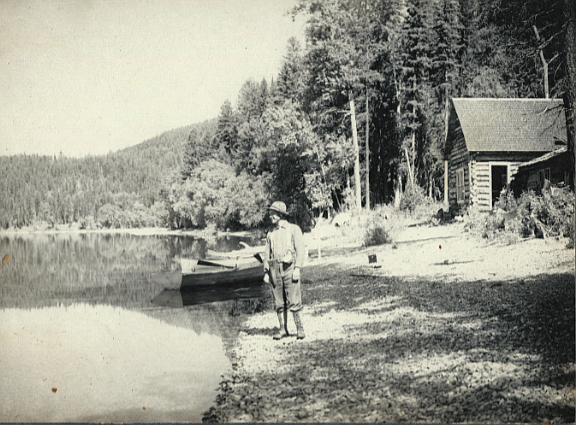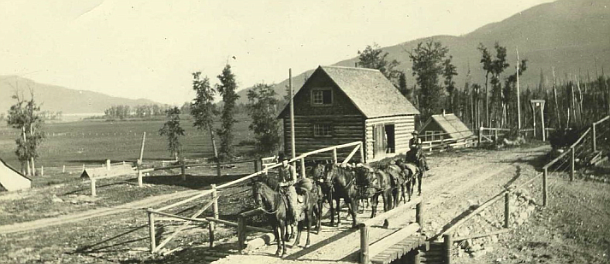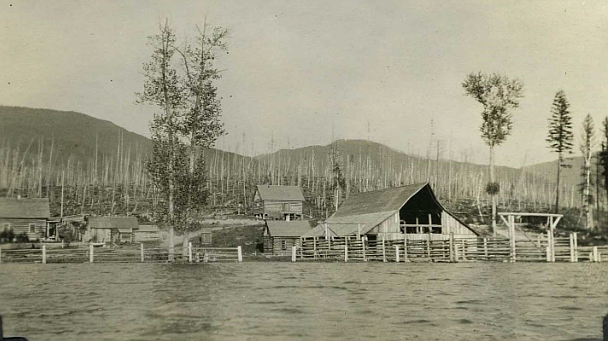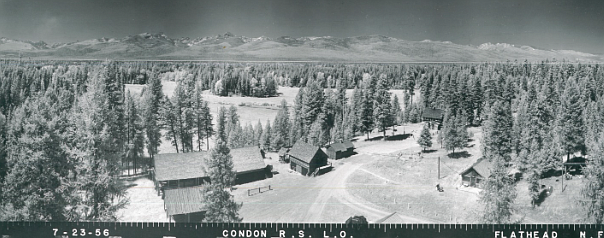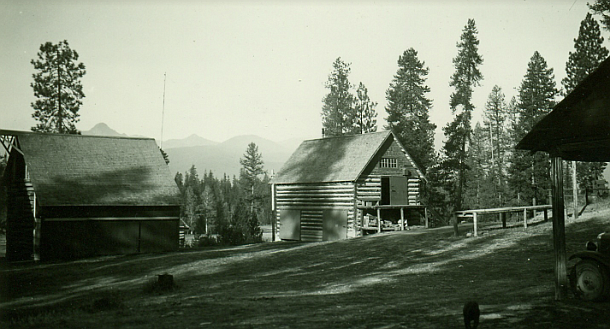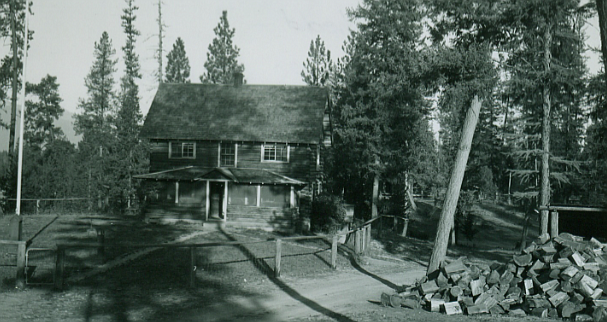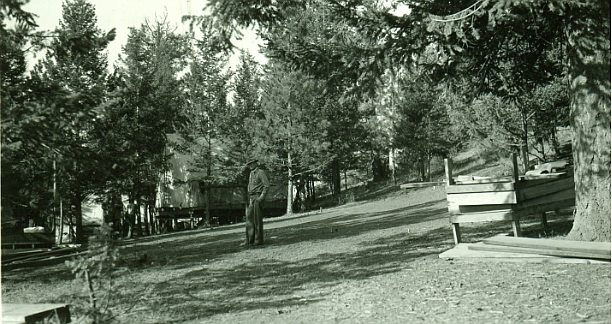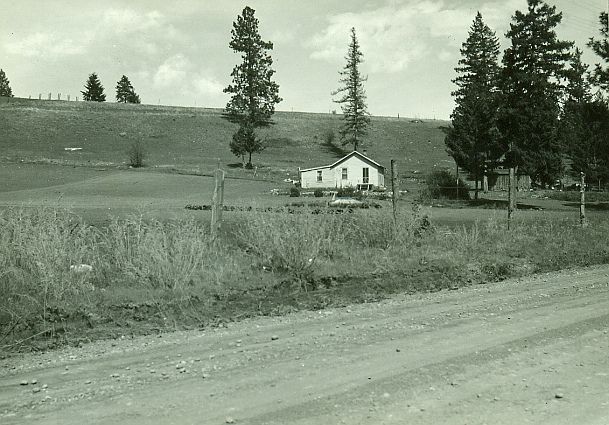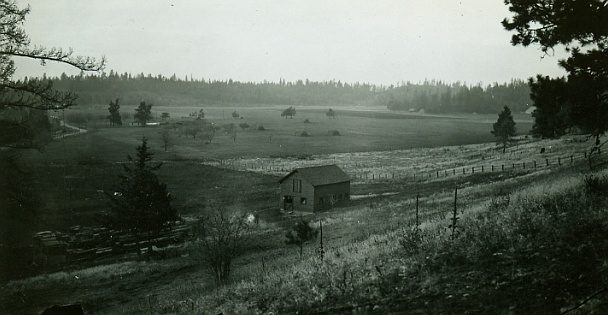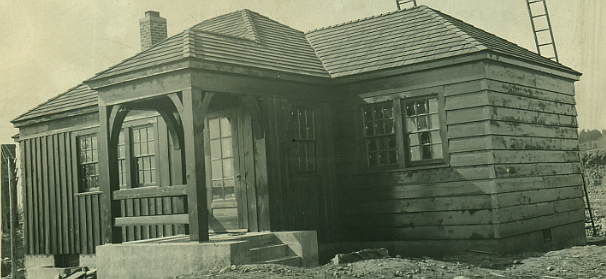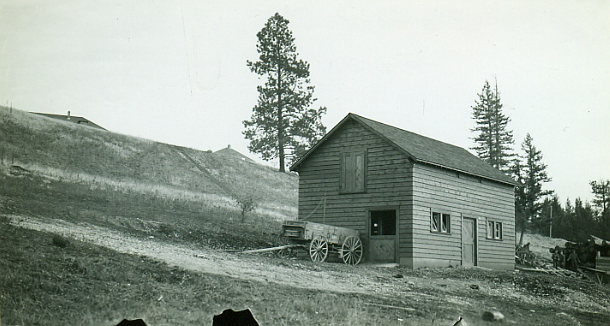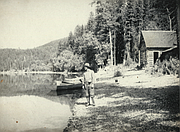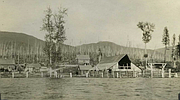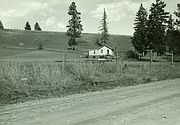“A worthless lot of shacks” -- Ranger Stations of the Swan Valley and Bigfork
While many in Bigfork associate the Forest Service with the bucolic white buildings that make up the current Swan Lake ranger district compound of today, the early Forest Service and its administration were typified by constant movement, adjustment, and construction.
The Flathead National Forest that we think of today didn’t officially exist until 1933 when the then much smaller Flathead was combined with what remained of the Blackfeet National Forest which at one time extended from Rexford to the prairie east of what is now Glacier National Park and south to the Great Northern Railroad, Columbia Falls, and west to Lake Mary Ronan. And while there are effectively 4 ranger districts at present, for several decades the forest had 8, and as far back as 1900 had 24 districts! To that end, the Swan Lake ranger district of today is a combination of what used to be up to 4 or 5 different ranger districts and each of those ranger districts had its own offices and associated support buildings, some of which still exist, while others are gone. Build quality was apparently also highly variable as a regional forest inspector noting in 1922 that the “buildings on the Blackfeet are surely a worthless lot of shacks”.
One of those that no longer exists and was designed in the frontier model associated with the early construction of ranger station buildings was the Echo Lake ranger station. Most of the available material states that the district existed from 1910 to 1934 and during that time had only one ranger, J.E. Thompson. It is also noted that in its early days, the ranger station was called the Thompson ranger station after the man himself. The ranger station consisted of a main ranger’s dwelling and a few buildings to support several pack strings and was located at the base of Noisy Creek, to the northeast of Echo Lake. As one of the few year-round staffed stations at the time, during the winter it also served as the main tack and saddle repair facility for the entire forest. At some point, perhaps around 1950, all the buildings were either demolished or removed as nothing exists at the site today.
Another early site a little closer to Bigfork is the Swan Lake ranger station located at the southern end of Swan Lake itself. While this ranger station was an important site during the Swan Lake timber sale of 1914-1919, it had been in use since the earlier days for the Flathead Forest Reserve with one source indicating its use starting in 1899, however, the first official buildings weren’t constructed till 1908-1910, although there may have been also been a cabin at the current site of the boat launch as early as 1905. The site eventually consisted of several buildings including a large barn that could hold up to 20 horses. In those early days, the men looking for sites tried to choose locations that were generally spaced about a one-day's horse ride apart. This was also a busy ranger station as it served as the main distribution point for three other districts to the south and was the main district location until 1938 when the district was moved into Bigfork. After 1938, it did continue to serve as a work center.
The “old” Condon ranger station served as the home for the Upper Swan then Condon Ranger districts. It was primarily a seasonal posting until the early 1920s when most of the buildings that still stand at the site were built. This includes the main residence, barn, warehouse, gas shed, and truck shed. The old “station” was used until 1965 when the new ranger station was built near the highway and the airstrip. Even then, the old ranger station served as the main base for several of the lookouts and fire guards. This “new” ranger station had a short life span, however, as the upper and lower Swan districts were combined in 1973.
By 1935, the Forest Service decided to combine some of the ranger districts around Bigfork and broke ground on the new ranger station facilities located in the town itself. While regional forester inspection reports in 1933 doubted the usefulness of a station at Bigfork stating that “further, it is not the center for anything in particular except a few ranchers…” by 1937 someone must have decided because several buildings at the current site were nearing completion. Important to note is that by the late 1930’s updated road and communications networks allowed for the centralization of resource to Bigfork and comparatively what must have felt like huge improvement in accommodations. Nearly all the original buildings completed by 1937 still exist today including the garage, main bunk house, and fire cache. While many of the buildings are original, they have been unfortunately altered too much to warrant listing in the national register of historic places.
There were also many smaller cabins located in the Swan Valley and near Bigfork which we unfortunately don’t have time to cover here. To learn more, it is recommended finding a copy of A Home in the Woods: Montana’s Westside Ranger Stations by Vicky MacLean. Her research and material were indispensable in creating this article.


